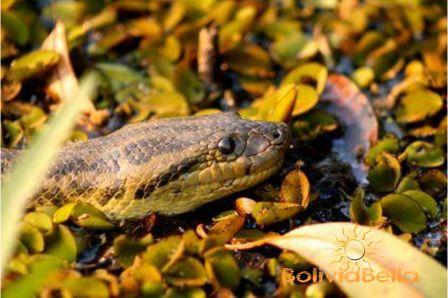|
San Matias Nature Reserve Bolivia The San Matias Pantanal, or wetlands was declared part of Bolivia’s National System of Protected Areas in 1997 and is part of the Bolivian Pantanal located in southeastern Bolivia bordering Paraguay and Brazil. San Matías the town is part of the Mancomunidad Chiquitana (Association of Chiquitano Peoples).
Although it is not a Jesuit Mission, this town is included in both my Jesuit Missions and Pantanal sections of the site because the people who live here are of Chiquitano origin. The reserve covers 2,918,500 hectares. It is located next to the Pantanal Matogrossense National Park in Brazil, permitting a flora and fauna corridor that will enhance preservation efforts in both areas. Rainfall is in the order of 1,400-1,600 mm/year, 80 percent of which falls during the rainy season (October-April). Mean annual temperature is 25oC. As a result of the interaction of temperature, rainfall and height regimes, 50 percent of the zone is classified as a humid temperate forest (bh-TE) and the other 50 percent as a dry temperate forest. Precambrian rocks belonging to the “Brazilian shield” provide the surface with a wavy and rocky physiography without permeability or porosity, and as such they have no capacity for circulation or storage of underground waters. The predominant vegetation belongs to the Brazilian Cerrado formation, but because it intersects the Chaco and Amazonian regions, it is possible to find flora and fauna characteristics of each. Fifty-six large and small ranches dot the area with about 534 people. The cultural diversity both in the area and in the areas of influence is represented, as in the Otuquis Pantanal, by Chiquitanos and Ayoreos; Creoles; migrants; and foreigners, mainly from Brazil. The entire Angel Sandoval Province, where the reserve is located, has 10,956 inhabitants. The main economic activities are centered around cattle ranching and agriculture (rice and corn). Recently the production of soybeans has increased. Soybean products are the main agro-industrial export of Bolivia. Some uncontrolled forest activities are common. Tourism is extremely limited due to the lack of services. In the town of San Matías outside of the protected area, visitors total 1,500-2,000 per year. New initiatives are planned to attract larger numbers of visitors. Within the reserve and the surrounding area, mining concessions (gold and precious stones) cover 214,643 hectares. In recent, but still preliminary studies of the Otuquis and San Matias wetlands, 14 vegetal formations were identified. Of these, nine were found in Otuquis and 13 in San Matias. Eight hundred and seventy-four specimens were collected, and 409 species identified, while the rest were classified to the level of family and gender, with a few unknown. All the material was collected at the Herbarium of the Museum of Natural History of Santa Cruz. The above information is part of a paper called “Wetlands in Bolivia”, written by Carlos B. Aguirre. Take a look at the Pantanal’s official website www.pantanal.org for further information on the San Matías Nature Reserve, the Pantanal wetlands, or the author. This page lists places to stay in the town of San Matías which is part of the Chiquitania region of Bolivia. No formal tours are offered specifically to this region; however, it may be possible to include this town as part of a custom tour if you plan to travel regions nearby. For this and other tours in Bolivia, contact Ruta Verde Bolivia.     |
